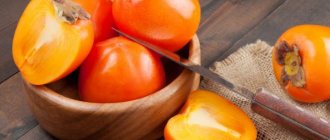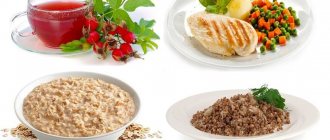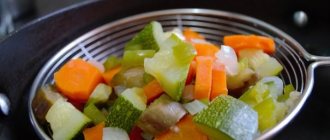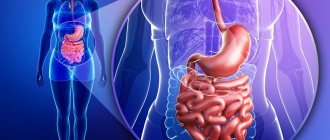Vegetables for pancreatitis
In case of pancreatitis, vegetables must be present in the patient’s diet, since they, along with fruits, are “suppliers” of vitamins and microelements necessary for the body.
What is possible
The list of allowed vegetables includes:
- potato,
- carrot,
- milky ripeness zucchini,
- pumpkin,
- eggplants,
- beet,
- tomatoes,
- onion,
- Bell pepper,
- cucumbers,
- cabbage – cauliflower, broccoli, Chinese cabbage, sea cabbage, Brussels sprouts,
- dill, parsley.
They promote the restoration of affected pancreas tissue, accelerating the regeneration processes of the gland parenchyma, and also stabilize its exocrine/endocrine functions.
What not to do
The group of vegetables that should not be consumed at any stage of the disease includes:
- white cabbage varieties,
- garlic,
- spinach,
- horseradish,
- radish,
- turnip,
- hot pepper,
- rhubarb,
- sorrel.
They contain a high percentage of plant fiber, which is quite difficult to process. Vegetables in this group can contribute to increased peristalsis of the intestinal tract, which, against the background of diseases such as pancreatitis, cholecystitis, gastritis, can cause the development of unpleasant symptoms: attacks of nausea, vomiting, intestinal spasms, diarrhea, flatulence.
Vegetables during acute pancreatitis or exacerbation of the chronic form
A relapse of the disease is characterized by swelling and hyperemia of the tissues of the gland and its ducts, which is accompanied by a deterioration in the outflow of pancreatic juice into the lumen of the duodenum. Digestive secretions accumulate in the main duct of the gland, as a result of which it begins to “digest” its tissues.
The patient develops pancreatic necrosis, a condition that requires urgent medical care, including surgical intervention. That is why during the period of exacerbation the pancreas needs to be provided with physiological rest. For these purposes, the patient is prescribed therapeutic fasting in the first few days. After partial relief of symptoms, vegetables are allowed to be introduced into a person’s diet.
Potatoes are a vegetable allowed for pancreatitis
In the acute form of pancreatitis - from the third to fifth day from the onset of the disease - the menu can include:
- potato,
- carrot,
- zucchini,
- pumpkin,
- cauliflower, broccoli.
They must undergo mandatory heat treatment. Eating them fresh is strictly prohibited.
Allowed vegetables in remission
After the disease enters the stage of stable remission, the patient’s diet becomes more varied. But vegetables should still be served boiled/stewed to eliminate the possibility of relapse. During the remission stage, you can add to the previously allowed vegetables:
- Chinese cabbage,
- tomatoes,
- cucumbers,
- beets,
- celery,
- dill, parsley,
- eggplants.
Important! After introducing a new type of vegetable into the diet, it is necessary to monitor the reaction of the pancreas. If unpleasant sensations appear, then it must be excluded.
What kind of vegetables can you eat?
For pancreatitis and cholecystitis, the following types of vegetables can be consumed in small proportions:
- Tomatoes - fiber actively removes toxic substances from the body, but it is better to refrain from taking tomato juice: this product is a choleretic agent, so an excess of bile can cause inflammation of the pancreas.
- Cucumbers are allowed in any quantity.
- Cabbage - it is best to consume this vegetable stewed or boiled - this promotes a faster digestion process in the body.
You should not eat vegetables that contain a lot of protein: peas, beans, corn, asparagus because they contribute to flatulence.
Fruits
For pancreatitis, fruits, as well as vegetables, must be present on the patient’s menu.
Allowed fruits
If during an exacerbation it is advisable to completely avoid fruits, then during a period of remission they may be present in the diet. For chronic pancreatitis you can eat:
Nutrition for acute pancreatitis
- Apples. The menu is allowed to include fruits with a sweet taste. It is recommended to peel them first.
- Apricot. The pulp of this fruit is low in density and therefore easy to digest. If the apricot is a bit harsh, it is advisable to rub it through a sieve.
- Cherries. The berry does not cause irritation to the pancreas and can be included in the patient’s menu without fear.
- Plum. You can eat only fully ripened berries without sour notes, after removing the skin.
- Peaches. Fully ripe fruits are allowed. They must first be peeled.
- Pears. Only summer varieties characterized by loose pulp are allowed to be included in the menu. You can also make juice from them.
- Bananas. Only fully ripened fruits can be used.
- Tangerines. They should be sweet, because only in this case they do not cause irritation to the digestive organs.
- Pineapples. They are allowed in limited quantities. It is better to avoid canned ones.
- Avocado. It is a source of vegetable fats, which are absorbed much easier in the gastrointestinal tract.
To diversify your diet, you must also include berries. They can be served fresh, present in desserts, and used for making compotes and jelly. Allowed:
- grapes are seedless, but you can’t drink the juice from them;
- gooseberries and black currants - first rubbed through a sieve to remove all the seeds;
- blueberries, lingonberries, blueberries - suitable for desserts and drinks;
- rose hips - for making a drink;
- Victoria, raspberries - pre-wiped to remove seeds and seeds.
Persimmon is included in the group of fruits conditionally permitted for pancreatitis
Some fruits are allowed to be included in the menu only with stable remission. This:
- persimmon;
- sweet oranges - best used for making juice;
- winter varieties of apples - served baked;
- mango - limited because it causes a sharp increase in blood sugar;
- kiwi - must be peeled, the pulp is rubbed through a sieve.
Forbidden fruits
If you have pancreatitis, you should not eat fruits with dense, unripe pulp, or with a strong sour taste. Prohibited fruits include:
- unripe apples due to their high fiber content;
- hard apples with a sour taste;
- winter pear;
- unripe kiwi;
- pomegranate;
- grapefruit;
- cherry;
- quince;
- lemon;
- cranberry;
- sea buckthorn.
Advice! In order not to provoke an exacerbation of pancreatitis, it is necessary to exclude from the menu any berries and fruits with a pronounced sour taste.
The listed fruits - with the exception of lemon and pomegranate - can be eaten in small quantities after preliminary heat treatment. But if a person experiences discomfort, then it should be abandoned.
Recommendations for choosing fruits and berries for inflammation of the pancreas
What fruits should you eat?
Some fruits are recommended to be included in the diet. The healthy fruits do not contain coarse fibers or aggressive acids. When consumed, there is no negative effect on the digestive tract, pancreas and mucous membranes.
The regular presence of such fruits in the menu allows you not only to replenish the supply of useful elements in the diet, but also to speed up the restoration of digestive processes.
Fruits that must be on the menu:
- bananas (increase vital energy);
- sweet apples (replenish vitamins, improve the functioning of the immune system);
- avocado (vegetable fat restores fat metabolism well in the body);
- apricots (contain a large amount of vitamins);
- watermelon (contains fructose);
- melon (prevents constipation);
- pineapples (improves the digestion process due to their protein content);
- feijoa (has a beneficial effect on the pancreas, contains B vitamins);
- peaches (improve immunity, contain vitamins of various groups);
- kiwi (contains vitamin D and C, replenishes the supply of nutrients).
What fruits should you not eat?
If you have pancreatitis, you should not eat fruits with a high content of aggressive acids. Such fruits can increase swelling of the pancreas tissue and provoke additional irritation of the mucous membranes. Fruits classified as prohibited foods should be completely avoided. They can provoke undesirable reactions from the digestive system even after heat treatment.
Prohibited types of fruits:
lemon;
- pomelo;
- oranges;
- grapefruit;
- dates;
- persimmon;
- mango;
- figs;
- sour apples.
Rules for preparing vegetable dishes
All vegetables for pancreatitis, according to the principles of dietary nutrition, must undergo heat treatment. Under the influence of high temperatures, the coarse plant fiber they contain becomes much softer, so they can be eaten without fear.
The harm from acids, essential oils and phytoncides present in vegetables is also reduced. On the second or third day after the onset of an exacerbation, it is allowed to serve boiled vegetables, previously thoroughly chopped, to the table. It should be a puree or cream consistency.
During the period of remission from cooking and steaming, it is allowed to use stewing - it is allowed to put a little vegetable oil in the products, baking in the oven - but a crust should not form on the surface of the product - suitable for making casseroles, soufflés, puddings, etc.
You can make a stew from vegetables. Use them to obtain juices. When slicing vegetarian (vegetable) salads, vegetables should be finely chopped (this applies to cucumbers and tomatoes), and carrots and sweet peppers should be grated. Vegetable oil is used for dressing.
You can add a small amount of butter or low-fat cream to baked vegetables and soups. A new vegetable dish should be served in small portions. The recommended amount is 2-3 spoons. If the pancreas has responded adequately, then it can be included in the diet, increasing the portion.
Vegetable pudding can be served for pancreatitis as often as you like
Fruits and acute pancreatitis
During an attack of chronic or reactive pancreatitis, the patient is forbidden to eat anything for the first 1–3 days; he himself does not want anything, since his stomach hurts greatly, he is tormented by nausea, vomiting, and diarrhea. Symptoms intensify due to the entry of any food into the gastrointestinal tract. At this stage, you can only drink pure still water or weakly brewed rosehip decoction. When severe abdominal pain, vomiting, and diarrhea subside, the doctor allows you to eat liquid or puree dishes from foods that are allowed (some vegetables, cereals, dairy products, fruits).
List of healthy fruits and berries for acute process
In the acute stage of pancreatitis, after consulting a doctor and passing the necessary tests, the following fruits are gradually introduced into the diet:
- sweet apples,
- bananas,
- rose hip,
- raspberries, strawberries,
- currants and some others.
From these products, during the period of intensification of the inflammatory process, you can prepare jelly and compotes. They can be served baked or added grated to a variety of dishes. Berry and fruit purees are added to porridges, cottage cheese casseroles, puddings, and mousses. If possible, fruits are peeled and seeds removed: they contain a lot of fiber that is harmful to the gastrointestinal tract. Coarse plant fibers increase the peristalsis of the gastrointestinal tract and abdominal pain, aggravate the manifestations of dyspeptic syndrome, that is, these products cannot be eaten fresh during an exacerbation of pancreatitis.
https://youtu.be/GYTKzRctEJs
Dish recipes
There are many recipes for preparing dietary dishes, so the patient’s food will be not only healthy, but also tasty.
Vegetable pudding
For cooking you will need: pumpkin/zucchini – 500 grams; semolina – 2 tbsp. l.; low fat milk – ½ cup; egg – 1 pc.; olive oil – 1 tbsp. l.
Cooking plan:
- Peel vegetables and remove seeds. Grate. Add a little water to them and simmer until done.
- Stir in milk and semolina. Stir and cook for another 10 minutes.
- Let the mixture cool slightly and add the beaten egg.
- Divide the mixture into portioned molds, pre-greased.
Prepare the pudding in a double boiler, but you can also bake it in the oven.
Useful video
The pancreas is a small organ of the digestive system, which is still capable of providing a person with many unpleasant moments, especially if there are problems with its functioning. Then the patient is forced to give up most of the previously consumed foods. If you have problems with the pancreas, you must adhere to a special diet called 5P. This will help avoid the occurrence of acute pancreatitis or the transition of chronic to acute form. There are a number of prohibitions on the use of certain foods that should be followed in case of chronic pancreatitis during recovery after an exacerbation or regardless of it. First of all, the ban applies to alcoholic beverages and certain medications. Restrictions are also introduced regarding fruits and vegetables. What vegetables can you eat without fear if you have pancreatitis?
general information
Let's take a closer look at what vegetables are good for pancreatitis? Vegetables are a source of healthy vitamins and minerals, so they help support the body.
Eating vegetables is necessary for the human body to maintain normal functional activity of all organs and systems.
During the acute stage of pancreatitis, you should not eat vegetables. Otherwise, all symptoms become more pronounced and complications may arise. As soon as the acute attack passes, as a rule, this lasts from 3-5 days, you can enrich your diet with healthy foods.
Chief gastroenterologist of the Russian Federation: “PANCREATITIS does not go away?! A simple treatment method has already healed hundreds of patients at home! To cure the pancreas forever you need...” Read more »
Carrots have a positive effect on the functioning of the gastrointestinal tract. You can eat it raw, or make a salad (grate the carrots into strips and add a little olive oil).
Potatoes are easily digestible, so they can be consumed after an acute attack of pancreatitis. Make mashed potatoes or casserole at home.
After an attack, it will be useful to enrich your diet with cauliflower, which is easily absorbed by the body. Note that cauliflower does not irritate the gastric mucosa.
Vegetables for pancreatitis are the basis of the diet of a sick person, along with cereals, some fruits, fermented milk and other permitted products.
It contains many nutritional components. For example:
- Calcium.
- Iron.
- Potassium.
After an acute attack of pancreatitis, you can boil cauliflower, then grind it in a blender and thereby get a delicious smoothie.
When the pancreas is inflamed, it is necessary to replenish the body with vitamins: A, C, E PP and K. Such vitamins can be found in a simple pumpkin. You can make porridge from the pumpkin or lightly bake it in the oven.
Also read: Is it possible to have eggs for pancreatitis?
Betaine - this component also has a positive effect on the functioning of the pancreas. It can be found in sufficient quantities in beets.
Important! Under no circumstances should beets be consumed fresh. It must be boiled before use. Then prepare a salad or other dish.
In case of a pronounced inflammatory process with pancreatitis, doctors recommend introducing zucchini into the diet. They contain not only Omega-3 fatty acids, but also polysaccharides, which have a good anti-inflammatory effect.
Recommendations from Elena Malysheva in the special issue “Live Healthy!” on how to overcome pacreatitis using the healing effects of natural remedies.
What vegetables can you eat if you have pancreatitis in remission? During this period of time, the diet can be varied. Eat foods that do not irritate the pancreas.
Why you should eat fruits and how they are good for the body
Interesting! From childhood, parents instill in them the idea that it is good to eat fruits every day, that they are rich in various vitamins and promote good health.
What do they give to the human body? The beneficial properties of the fruit are:
- In ensuring a good mood. This is achieved due to the fact that they contain folic acid and selenium, which are responsible for the production of so-called joy hormones - endorphins. For example, apples and bananas help in this case.
- Gives a burst of energy. Considering that fruits consist mostly of water. They are able to satisfy not only the feeling of hunger, but also the feeling of thirst. However, it does not take much time to digest them. If you want to be alert and fresh in the morning, then you should eat various combinations of fruits for breakfast.
- Provide the body with essential vitamins. At the same time, their absorption occurs completely, which is why they compare favorably with synthesized multivitamin complexes.
- Promote effective weight loss. The fact is that they are rich in plant fiber, which, when it enters the intestinal lumen, gives a feeling of fullness, but contains practically no calories. Additionally, fiber activates intestinal motility, which promotes the elimination of toxins and other toxic compounds.
- Participate in the prevention of atherosclerosis. Firstly, they themselves do not contain cholesterol. Secondly, they contain pectin, which helps rid the body of “bad” cholesterol fractions. Accordingly, if a person regularly consumes fruits, he protects his blood vessels from the formation of cholesterol plaques.
- Helps to prolong a person's youth. This is ensured by the antioxidants contained in the fruit. These substances participate in cellular renewal of the body and prevent the oxidation of organic compounds.
- Improves immune response. If a sufficient amount of fruit is present in the diet, this will reduce the risk of viral and bacterial infections.
What can you eat if you have chronic pancreatitis?











